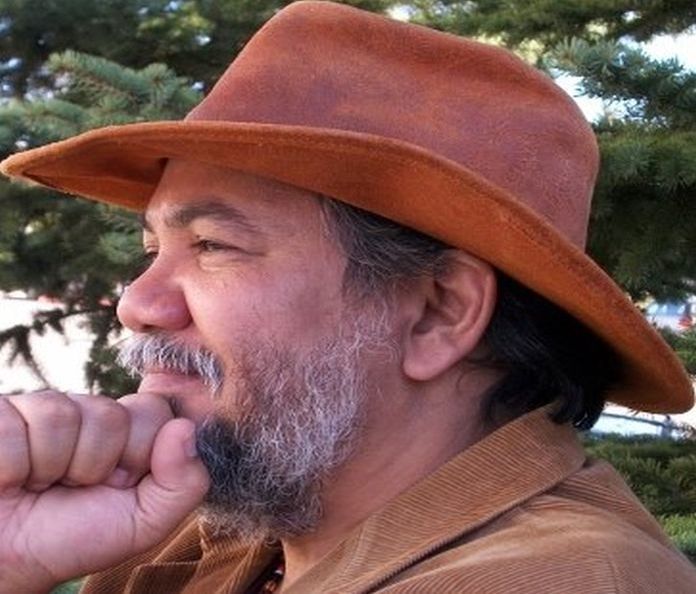By Johnny Coomansingh
Hurricanes impact the Caribbean tourism industry in several ways. It is probable that a stochastic formula could be created to determine the net effects of Caribbean hurricanes. However, in the absence of such a formula the yin and yang of these atmospheric disturbances will be described.
Hurricanes present a scenario, which more or less defines a seesaw economy in the business of Caribbean tourism. In such a scenario, when one country faces the hardships of death and destruction another enjoys the blessing of a windfall of much-needed currency provided by tourists.
According to the Department of Atmospheric Science-Tropical Meteorology Project, Colorado State University, there were 125 hurricanes in the North Atlantic ocean during the period 1990-2000. To investigate and record the damage done by these hurricanes that tormented the Caribbean basin during this period will be an extremely time-consuming exercise. Space would not permit to highlight every single one in this article. Despite the fact that category one hurricanes can do severe damage as well, greater focus will be laid on the devastation cause by the more violent hurricanes for the decade.
A sterling example was hurricane Mitch. Mitch was labelled as one of the worst disasters in the region for the century. This 1998 hurricane destroyed most of the bridges and roads in Honduras and also left many in mourning. Seven thousand citizens died in Honduras as a result. The death toll for Mitch was a whopping 15,000.
Following Mitch, the 1999 hurricane Georges ripped through the Caribbean in late September leaving hundreds dead and over 160,000 people homeless. Georges with winds up to 135 mph left a trail of disaster in Puerto Rico, the Dominican Republic, the US Virgin Islands and four Gulf Coast states.
Damage costs from Georges, the costliest hurricane in 1998 soared upwards into the region of $2.5 billion. Damage or destruction to 50,000 homes was sustained in Puerto Rico. In the Dominican Republic, 5,000 from the 40,000 available hotel rooms were put out of commission along the south coast. Apart from the destruction of homes and basic infrastructure farms were obliterated.
Decades of economic development were swept away by this hurricane. All of the container cranes were damaged beyond repair in Puerto Rico. Also suffering damage to their ports were Haiti, Cuba, Dominican Republic and Jamaica. Reports coming out of Cuba showed that at least two people were killed in the wake of Georges, which washed away roads, bridges as well as damaging some of the top centers for tourism and agriculture. Georges churned up heavy rains and whipped up waves of up to 19 feet.
Acting as a double whip in 1995, two hurricanes, ten days apart roared through the Caribbean. Hurricane Luis on September 06 swept through with devastating winds pounding Antigua, Saint Martin, Anguilla, the US Virgin Islands, Puerto Rico, Saint Barts, Dominica and Guadeloupe leaving thousands homeless and killing twelve people. One tourist died in Guadeloupe. Puerto Rico also recorded the deaths of two tourists. The hardest hit was the twin-island republic of Antigua and Barbuda where considerable damage was done to its 365 beaches and the Frigate bird sanctuary in Barbuda. Accompanying the wind was extremely heavy rainfall. With hotels badly damaged, tourism was wiped out temporarily on Saint Martin and Saint Thomas. Saint John also suffered extensive damage to hotel infrastructure.
In 1994, St Thomas, St John, and St Croix (US Virgin Islands) attracted 1.2 million cruise ship visitors. Visitors spent about one billion dollars on these islands during the said year. Eighty-five percent of businesses on these islands depend on tourism. These tourist resort islands did not stand a chance with these tempestuous disasters. On Saint Martin, the properties destroyed were primarily residential.
Before they could have revived their businesses, a mere ten days later, hurricane Marilyn joined in, creating more havoc to these Caribbean states. St Thomas suffered the worst beating that Marilyn had to offer. Since these islands had not experienced the effects of a hurricane for the past 35 years it was reported by that they were not quite prepared for such an onslaught. Because of the long lapse of three and a half decades, a false sense of security could have prevailed on these islands.
Most of the hotels and tourist resorts that were damaged or destroyed were rebuilt with insurance payments. Cruise ships and yachting vacationers in an effort to minimize the impact, sought for routes and harbors with less violent weather. With regard to this type of inclement weather, Trinidad and Tobago became a ‘sanctuary’ for pleasure craft during the June 01 to November 30 period.
Insurance companies will not honor claims for vessel damage or loss if they are found upwards of 12 degrees north latitude, 150 miles north of Trinidad during hurricane season. This scenario has literally created an economic boom for Trinidad’s marine services industry. In 1999, the Trinidad Express Newspapers (November 22) reported that terrible seas whipped up by hurricane Lenny forced two cruise ships to find safe harbor in Trinidad.
Five thousand visitors were deposited in Port of Spain, much to the glee of hoteliers, restauranteurs and vendors of crafts and souvenirs. Hurricane Lenny made it impossible for these ships to rendezvous in their usual haunts such as Saint Lucia, Dominica and Saint Vincent. What was a loss to these other islands became Trinidad’s gain. This is one of the reasons why the tourism economy of the Caribbean can be viewed as a seesaw economy.
However, one of the major problems affecting Caribbean tourism, is how the media relays information about hurricane disasters. After reading news reports, people remain with the perception that the entire region was destroyed. This type of reporting is insensitive to the needs of the Caribbean, and in many ways does more harm than good for the tourism industry.
At a rate of 135 mph, hurricane Keith in 2000 ploughed through the rimland country of Belize. Ripping through the coastline, Keith flooded the country. Seventeen villages were battered and 60,000 people, 25 percent of the population, were affected. This disturbance inflicted damage to the tune of $280 million to the country.
With one of the most extensive reef ecosystems in the Western Hemisphere, three atolls and a network of inshore reefs, Belize suffered heavy losses from the impacts of hurricanes. Belize is a literal scuba-diving mecca, but with 20 inches of rain from Keith many coastal resorts were flooded. Keith arrived just when Belize was experiencing its tourism boom. In 1999, one hundred and ten million dollars were pumped into the economy from 161,000 visitors.
Tourism accounts for about a fifth of the Belizean gross domestic product. From the effects of Keith, Belize lost in two ways, tourism dollars, and the expense generated by the devastation. Integrated coastal zone management is now a priority. The program includes measures to benefit the reefs, which are nothing short of diving havens.
Already mentioned is the destruction sustained by the agricultural sector of these Caribbean economies. Many of these countries are constantly dealing with an uphill task of survival on world markets for their raw product. With the exception of Trinidad and Tobago, and to some extent Jamaica, many Caribbean states have become dependent upon banana, and sugar cane cultivation due to their a lack of mineral resources such as petroleum, asphalt, natural gas, and bauxite.
The banana scenario in some anglophone countries will be presented here. Anglophone countries such as Belize, Jamaica, Dominica, Saint Vincent, Saint Lucia and Grenada have been given special status with the European Union for a guaranteed price for their banana exports. However, in 1993 and 1994 the quantity of banana exports fell below the quota of 477,000 tons due primarily to hurricanes in the region. This situation spells detriment to Caribbean states.
With hurricanes destroying the banana crop, less capital is available for injection into tourism development. Thus a vicious circle is formed in the aftermath of hurricanes due to the fact that much less capital is available in the system. Geest, the leading banana importers in Britain suffered severe losses during the period because of Caribbean hurricanes. Profits in the fresh produce division of Geest dropped from Pounds 13.8 million to pounds 8.9 million because of banana shortages.
In sum, the agricultural sector employs about 20 percent of the labor force in the region. And there are important forward and backward linkages between the agrarian sector, manufacturing and tourism. According to Wesley Gibbings, a prominent Caribbean journalist: “Devastated by hurricanes, damaged by flood rains, ravaged by droughts and assailed by diseases, the Caribbean’s agricultural sector continues to struggle for survival.”
An assessment of the tourism scenario in the Caribbean lucidly shows that the region has been plagued by hurricanes and will continue to experience such hazards in the future. Small Island Developing States (SIDS) will continue to sustain damage to basic infrastructure in the wake of hurricanes.
When hurricanes unleash their fury upon these struggling and impoverished states, the fragile links that hold together the elements of agricultural production, manufacturing and tourism are severed within minutes or hours. Re-establishment of these links sometimes takes years. A look at certain economic indicators such as unemployment, and per capita income provides the foundation for the theory that many of these Caribbean states are struggling.
Poverty is rampant, unemployment is high, and a mercantilist system pervades the environment. With an ever-widening rift between the affluent and the poor, the area denotes a high percentage of people who can be classified as marginalized. Problems associated with these struggling economies are exacerbated when hurricanes strike.
When hurricanes visit, employment troubles emerge. In a 2000 survey conducted on the business of Caribbean tourism it was reported that 720 employees lost their jobs because of a hurricane on the island of Nevis. The potential for loss or vulnerability is extremely high in any hurricane situation.
The records show that during the period 1990-2000, 125 hurricanes swept through the Caribbean basin. The year 1995 showed an increase in the number and intensity of hurricanes, which may have been related to the effects associated with the El Nino phenomenon. These hurricanes not only created havoc in the tourism industry but delivered severe blows to other sectors of the economies of Caribbean states. Banana-growing countries felt the more bitter effects of the hurricanes of 1994 and 1995.
Hurricanes can rip apart an area within hours. In terms of risk, the Caribbean region is above average when it comes to hurricanes. The onslaught of a hurricane forces the cancellation of flights, the closure of airports and the re-routing of cruise vessels carrying thousands of much-needed tourists to another location.
Apart from such losses, power and telephone lines collapse, bridges and roads become impassable, low-lying areas become inundated, and coastal areas experience the devastation of storm surges. Much more damage is done than meets the eye. Sometimes the little amount of topsoil so badly needed for crop production is washed away.
Countries, which also depend on crop production for hard currency, suffer painful losses when their export crops (bananas and coffee) are destroyed by hurricanes. Landslides also take with them much-valued soil and vegetation, not to mention the many of the marginalized that lose life and limb. The month of September for many is a dreaded time. It’s the peak of the hurricane season.
Islanders today can be better prepared for a hurricane event because of the technology applied in tracking the disturbance. However, technology will not prevent the arrival of hurricanes. Hurricanes will continue to roar and rip through the Caribbean region every year. The constant building and rebuilding have gone on for years in the past, and will also continue for years to come.
With tourism being the primary foreign exchange earner for many states, it behoves the powers that be, the political directorate and local and regional tourism organizations to ensure the safety of tourists and citizens alike during hurricane events. In fact, tourism organizations should be constantly researching and implementing programs to attract tourists to the shores of their states but also to keep them free from harm and danger. Nevertheless, some programs are sometimes far-fetched.
What sounds like a very crazy idea is the concept of ‘extreme-weather’ tourism. The Caribbean Tourism Organization (CTO) is now toying with the idea of providing an innovative package to the adventurous tourist – the idea of using hurricanes as tour opportunities. This concept, it is hoped, will convert the riskiest and slowest tourist season as an novel opportunity for weather-watchers. Extreme-weather tourism is on the increase worldwide, but after all that has been said, can we really celebrate Huracan the Carib god of disaster? Selling a hurricane is more than meets the tourist gaze.







